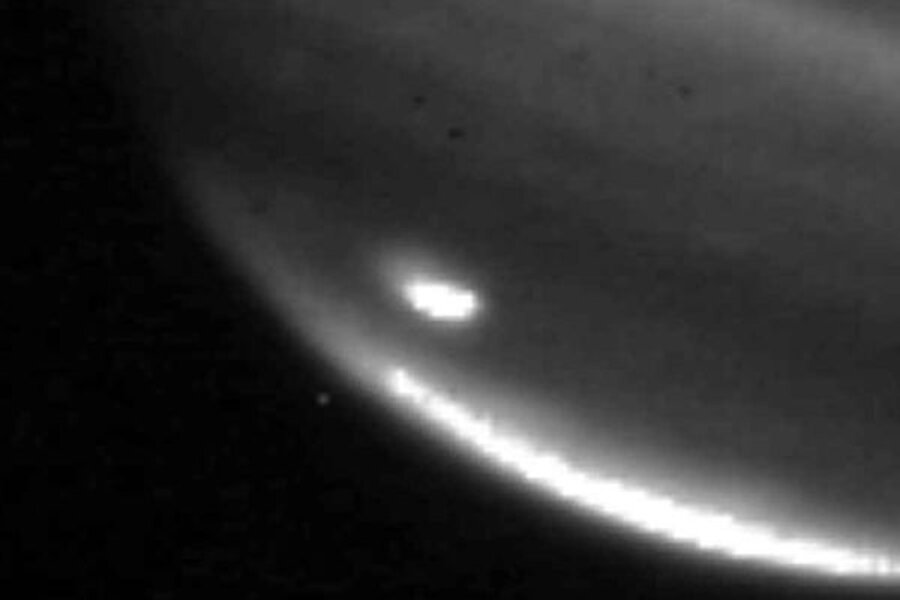Amateur astronomer finds a hole punched in Jupiter
Loading...
Jupiter's tough. It can take it.
If you have doubts, check out the latest impact by a comet or an asteroid (astronomers are still trying to figure out which).
Credit Australian amateur astronomer Anthony Wesley with the discovery. He lives outside of Murrumbateman, New South Wales, about 23 miles north of Canberra.
He was nearing the end of a long skywatching session Sunday when his telescope's camera recorded what looked like a fresh dark collision scar on Jupiter's cloud tops. It was moving too slowly to be a Jovian moon's shadow, and it wasn't there in observations he'd made a few nights earlier. You can read his full account of the observation at his website.
The mark was similar to marks left after comet Shoemaker-Levy 9's buckshot-like collision with Jupiter in 1994. The comet had broken into 21 fragments and would pepper the giant planet between July 16 and July 22.
Fifteen years later to the day(s), Mr. Wesley made his discovery.
Since then, amateur astronomers in other countries have tracked the scar. And the National Aeronautics and Space Administration has confirmed the event using the Infrared Telescope Facility atop Hawaii's Mauna Kea volcano.
"It could be the impact of a comet, but we don't know for sure yet," notes Glenn Orton, a researcher at NASA's Jet Propulsion Laboratory in Pasadena, Calif.





